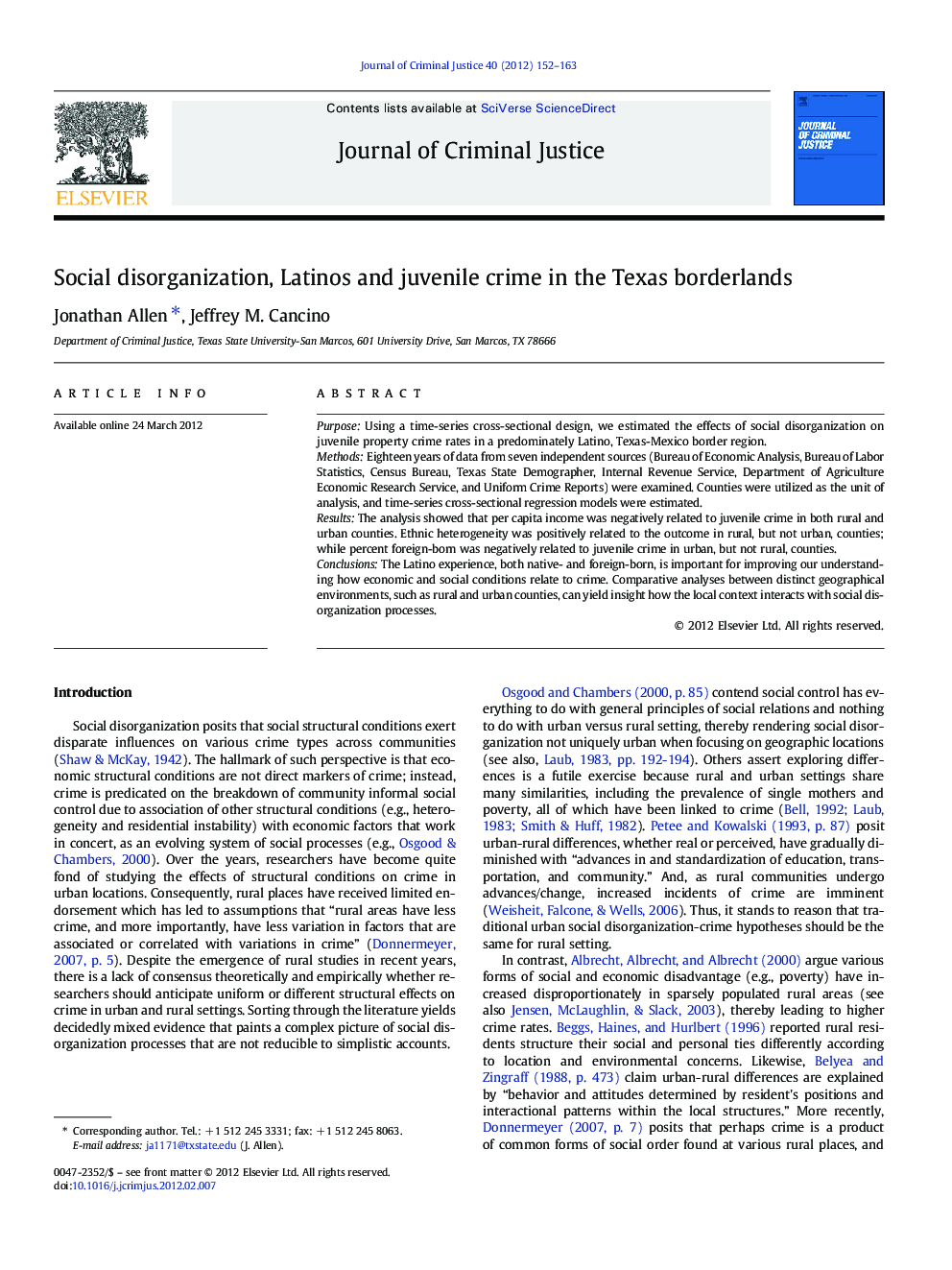| Article ID | Journal | Published Year | Pages | File Type |
|---|---|---|---|---|
| 882840 | Journal of Criminal Justice | 2012 | 12 Pages |
PurposeUsing a time-series cross-sectional design, we estimated the effects of social disorganization on juvenile property crime rates in a predominately Latino, Texas-Mexico border region.MethodsEighteen years of data from seven independent sources (Bureau of Economic Analysis, Bureau of Labor Statistics, Census Bureau, Texas State Demographer, Internal Revenue Service, Department of Agriculture Economic Research Service, and Uniform Crime Reports) were examined. Counties were utilized as the unit of analysis, and time-series cross-sectional regression models were estimated.ResultsThe analysis showed that per capita income was negatively related to juvenile crime in both rural and urban counties. Ethnic heterogeneity was positively related to the outcome in rural, but not urban, counties; while percent foreign-born was negatively related to juvenile crime in urban, but not rural, counties.ConclusionsThe Latino experience, both native- and foreign-born, is important for improving our understanding how economic and social conditions relate to crime. Comparative analyses between distinct geographical environments, such as rural and urban counties, can yield insight how the local context interacts with social disorganization processes.
► We examine social disorganization and juvenile property crime along the Texas border. ► We use a time-series cross-sectional analysis for 29 counties over 18 years. ► We find moderate support for the theory within the region as a whole. ► Effects of social disorganization vary between rural and urban counties in the area. ► Percent foreign born is negatively related to juvenile property crime in the region.
